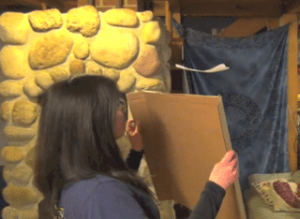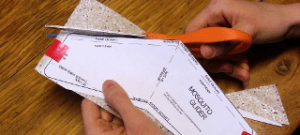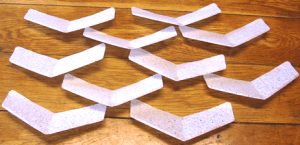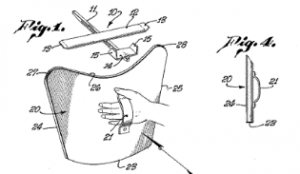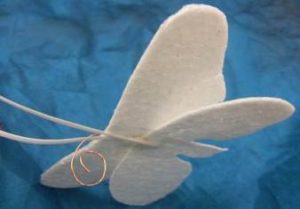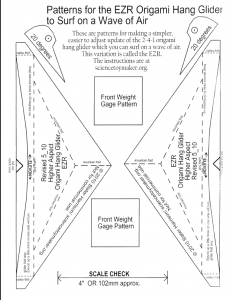Peter Sripol is a popular YouTuber whose projects range from human-carrying quadcopters to fire trucks with flamethrowers—very creative and funny. He first made a name for himself at FliteTest.
Then, at the opposite end of YouTube Land is a nasty genre of videos about paper airplanes that fly forever—suspended between two fans or flying around in thermals over stoves or candles—all completely fake, mind you. The people who make these videos have some CGI skills and total moral deficit. To enhance the gullibility of their viewers, they dispense “helpful” hints. Can you imagine that there are people so morally compromised that they encourage kids to enthusiastically start making a project that is doomed to failure?
So back to Peter. In his video, he first dismisses the hoaxes, then experiments to see if it is possible to use real physics to make a self-sustaining glider. He starts with walkalong gliders and…well, just watch the video. Amazing!
Many YouTubers “liberate” other people’s ideas without any thought of attribution, but—gentleman that he is--Peter Sripol gives a shout-out to sciencetoymaker at the end.
Tag: Walkalong glider
Jagwing Ready to Fly Class Fleet 30 Gliders
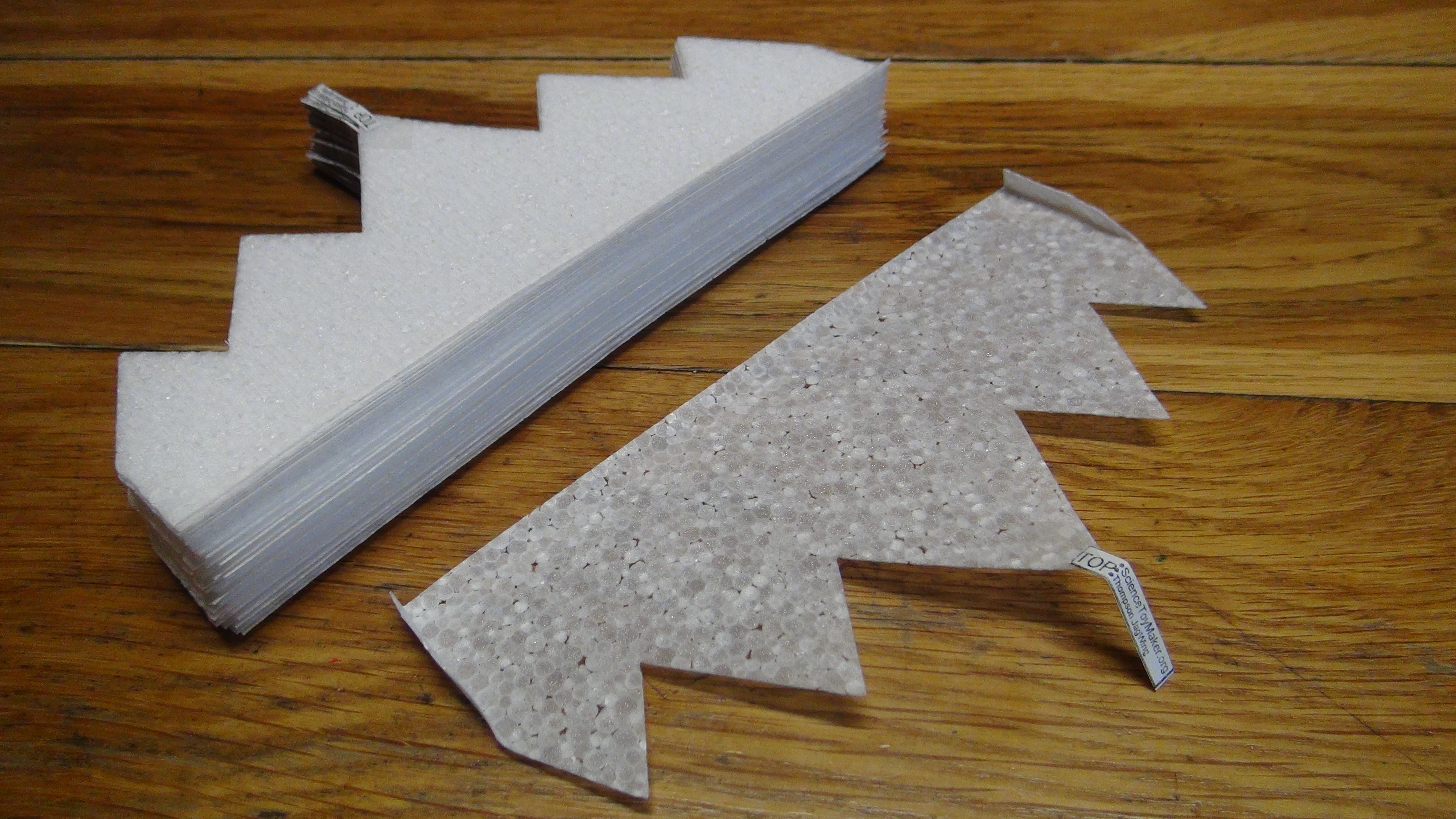
30 Ready-to-Fly Jagwing (10kg/㎥ foam)
Price and Shipping
U.S. customers: $21 USD + $5 flat-rate shipping
(even for multiple orders gliders, which are sent in a single box).
International customers: $21 USD + and please contact me for shipping cost.
I will need a postal address to find out the price.
By default we use the least expensive shipping method and IT CAN TAKE UP TO A MONTH!
More about international postage–delivery time, faster delivery, cost, etc.–is here.
If possible, please provide a telephone number if you think there might be a delivery problem.
A Note About Payment
PayPal
Embedded PayPal buttons for customer convenience and security have worked well and automatically convert currencies. When you click on a button, you go to a secure PayPal page. Even if you do not have a PayPal account, you can still just use a credit card. All proceeds go directly to the non-profit, education organization, the Physics Factory.
Checks
If you send in a check, please make it out to Physics Factory. Feel free to contact me, Slater, with any questions.
Note: I heard from some people who said that a minimum of 40 gliders is too many, so I switched to 30 gliders standard. However, if you need a few more just contact me and I can provide whatever number you want, prorated at 70 cents per additional glider. I can send a PayPal invoice for the correct amount.
I think that the Jagwing walkalong glider is the best to start with for most people. Although Jagwings are not the most efficient glider, they are very flight stable and they are still efficient enough that I can fly them hands-only. This YouTube video has a few rough editing patches, but is still the best for getting you started surfing walkalong gliders on a wave of air and understanding the science.
Glider size is about 4" X 8" (about 10cm x 20cm) and 0.8mm thick. The foam is thin to be lightweight enough to fly amazingly slowly, so it has to be handled carefully. You should be aware of the sensation of feeling in your hands whenever handling the gliders.
When you are teaching other people to fly is not the time to be figuring it out yourself. Practice ahead of time!
Discounts: I do not discount for quantity. However, I am aware that many hands-on science education programs are gallingly underfunded. Indeed, sometimes leaders are paying for supplies out of their own pocket. I don’t have an application form, but if you contact me and briefly explain your circumstances, I’ll see what I can do.
Back to Air Surf ShopFly a Walkalong Glider–Quick Start
The easiest way I have found to start flying walkalong gliders.
Welcome to Air Surfing!
(AKA Walkalong Gliding)
"Any sufficiently advanced technology is indistinguishable from magic." --Arthur C. Clarke
If YouTube is blocked at your school, try this 16MB MPEG file
How to Start Flying Any Design of Glider
Introduction to Walkalong Glider
The first time I encountered gliders levitated and controlled by an invisible wave of deflected air, it felt like magic! Surely this was going to take the world by storm, the way Mentos and Soda swept the world as a science activity a few years ago. But while researching the history of walkalong gliders, I was surprised to learn that the concept of surfing the gliders is decades old. Knowledge about them was cloistered within a few aerospace engineering and hang glider communities—definitely not in schools.
As an educator, I set about to make walkalong gliders accessible to regular people as a fun science activity by developing thin (1/2 mm) foam gliders that are an order of magnitude lighter than paper. Only a few times denser than air itself, they fly so slowly that beginners have time to think and react. If I walked beside you and we both held onto the board, then you could learn to fly in minutes because that way you gain a feel for flying. Soon you would be swooping around your house flying as easily as you ride a bicycle.
And the thin foam gliders are so efficient that advanced pilots (with practice) can levitate them with only their hands deflecting the air! The foam sheets are inexpensive to buy or slice your own--no one is excluded for lack of money. I find that kids around the age of 10 start having enough coordination to fly them.
So NOW the activity is going to catch fire, right? No. Any knucklehead can drop Mentos in soda, but walkalong gliders demand more. You don’t need to be flight savvy to start, but you have to pay attention to details. For one thing, the thin, light foam is also very delicate. The gliders won’t break from crashing into walls, but careless/nervous hands will wreck them in seconds. Even adults lack an analog for handling something that carefully--unless they’ve cuddled with a pet butterfly. Furthermore, the gliders need dead-still air, which usually means not outside except at dawn and dusk. Even aggressive HVAC systems and cause too much air turbulence inside. And although I can easily show people how to fly, being the first in your region with nobody to show you is more difficult.
Some people will be daunted by these eccentricities of walkalong gliders. But inspired pioneers--who care a little more about details and work a little harder to learn new things--are spreading walkalong flight in the world! Here are some tips for teaching groups to fly.
Foam Walkalong Glider Gallery
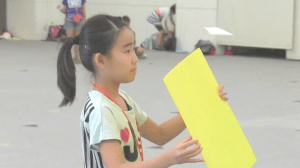 Check out the flight gallery of people who have sent pictures or posted videos.
Check out the flight gallery of people who have sent pictures or posted videos.
Learn to Fly Walkalong Gliders
Flying an already-made glider is the best way to begin and all packages come with a couple of RTF (ready to fly) gliders. This video shows the best way I know of how to learn.
Teaching a group to fly? Here are some tips.
Get Gliders and Foam Sheets
Using gliders made from thin, low-density EPS (expanded polystyrene) is the best way to get started. Foam is extremely lightweight and slow-flying, so you have time to think and react. Thin sheets of EPS foam are much lighter and more rigid than paper, and inexpensive, too. Get gliders and foam here.
Stop Glider Static Cling
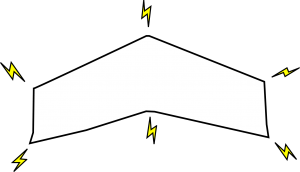 If the glider is attracted to the board, you just need a damp wipe.
If the glider is attracted to the board, you just need a damp wipe.
Archived Pages and Cool Stuff Related to Air-Surfing
Sort of interesting to see how I got into walkalong gliders and how it developed. (via Wayback Machine)

